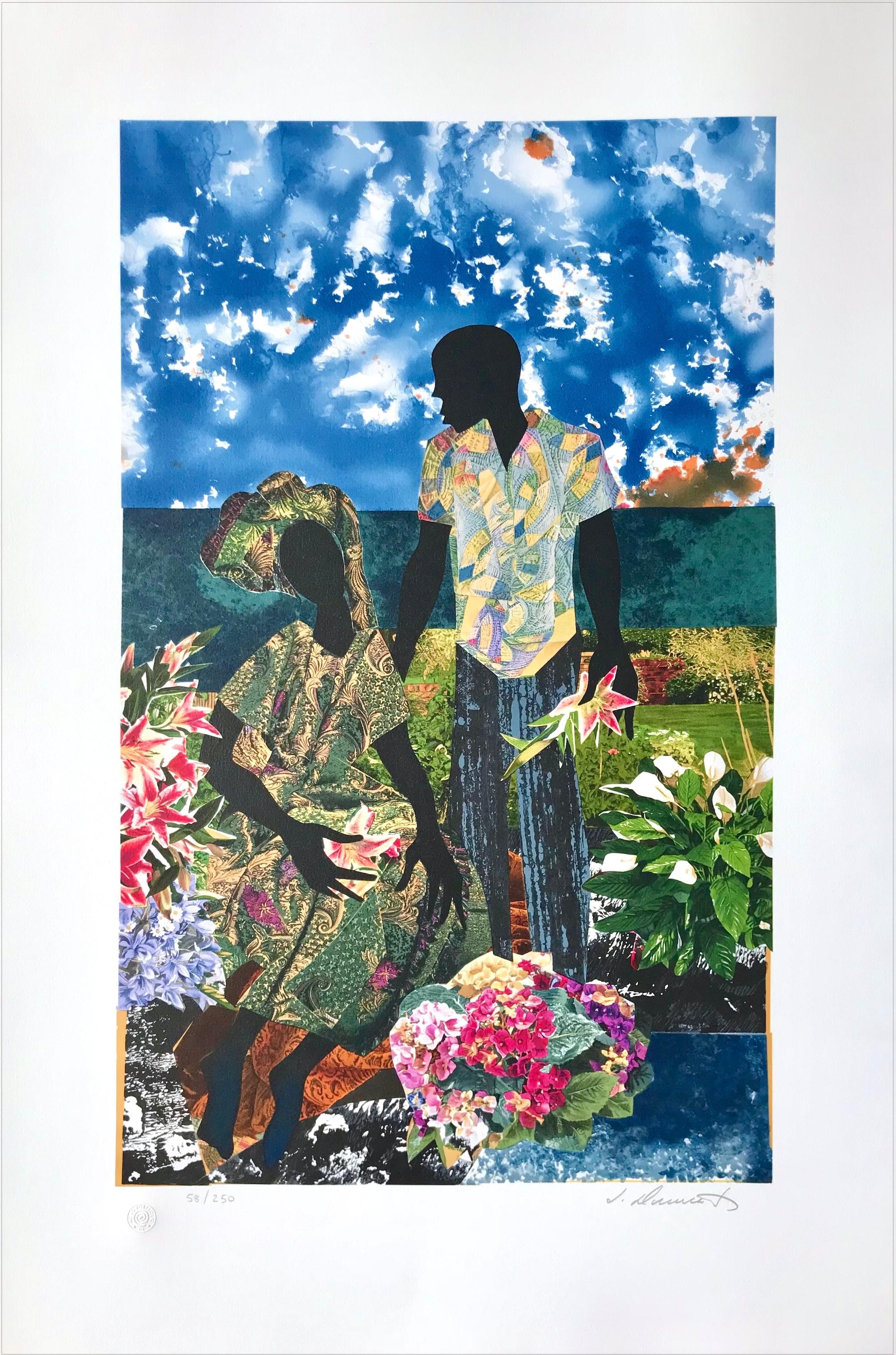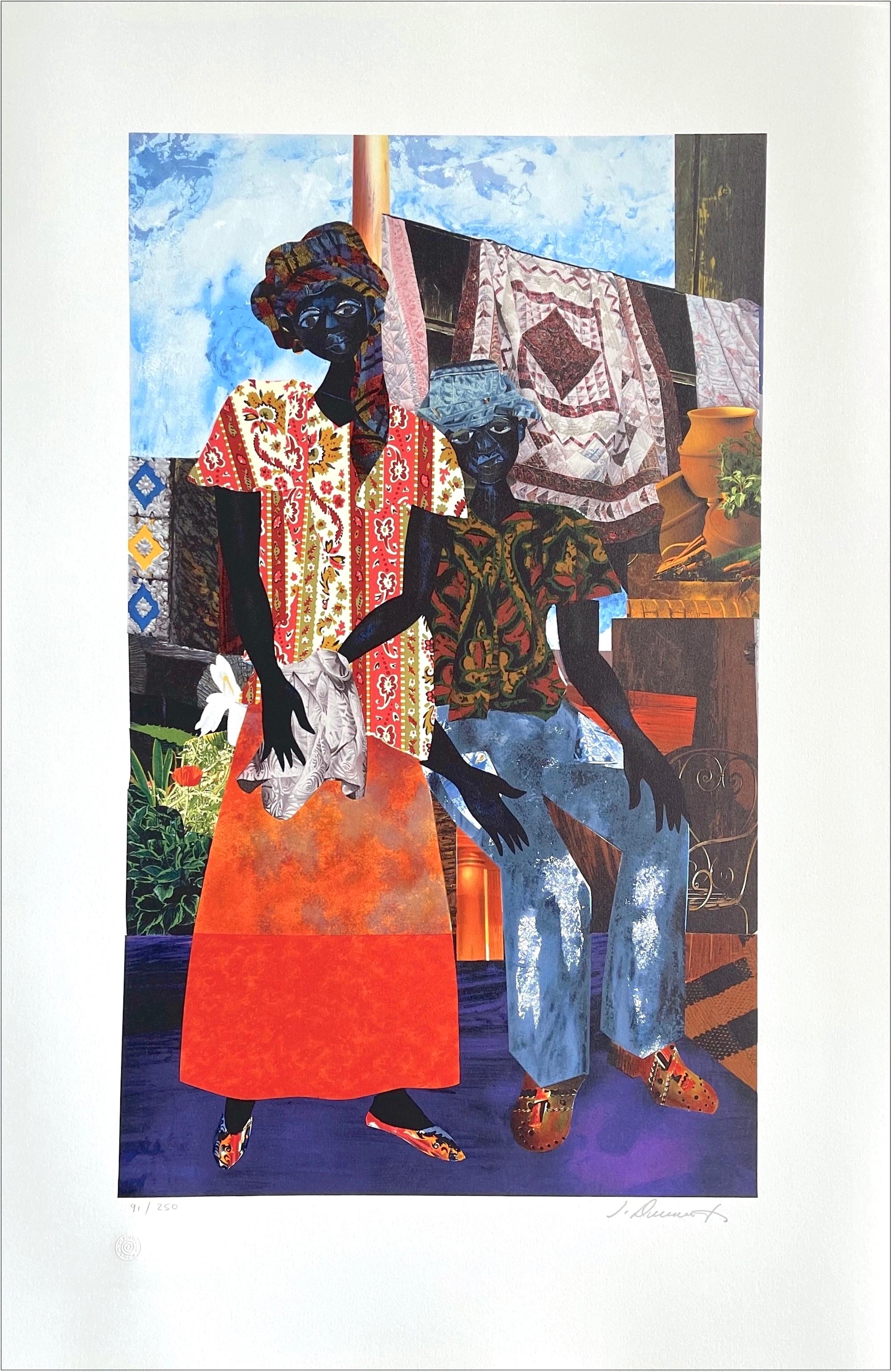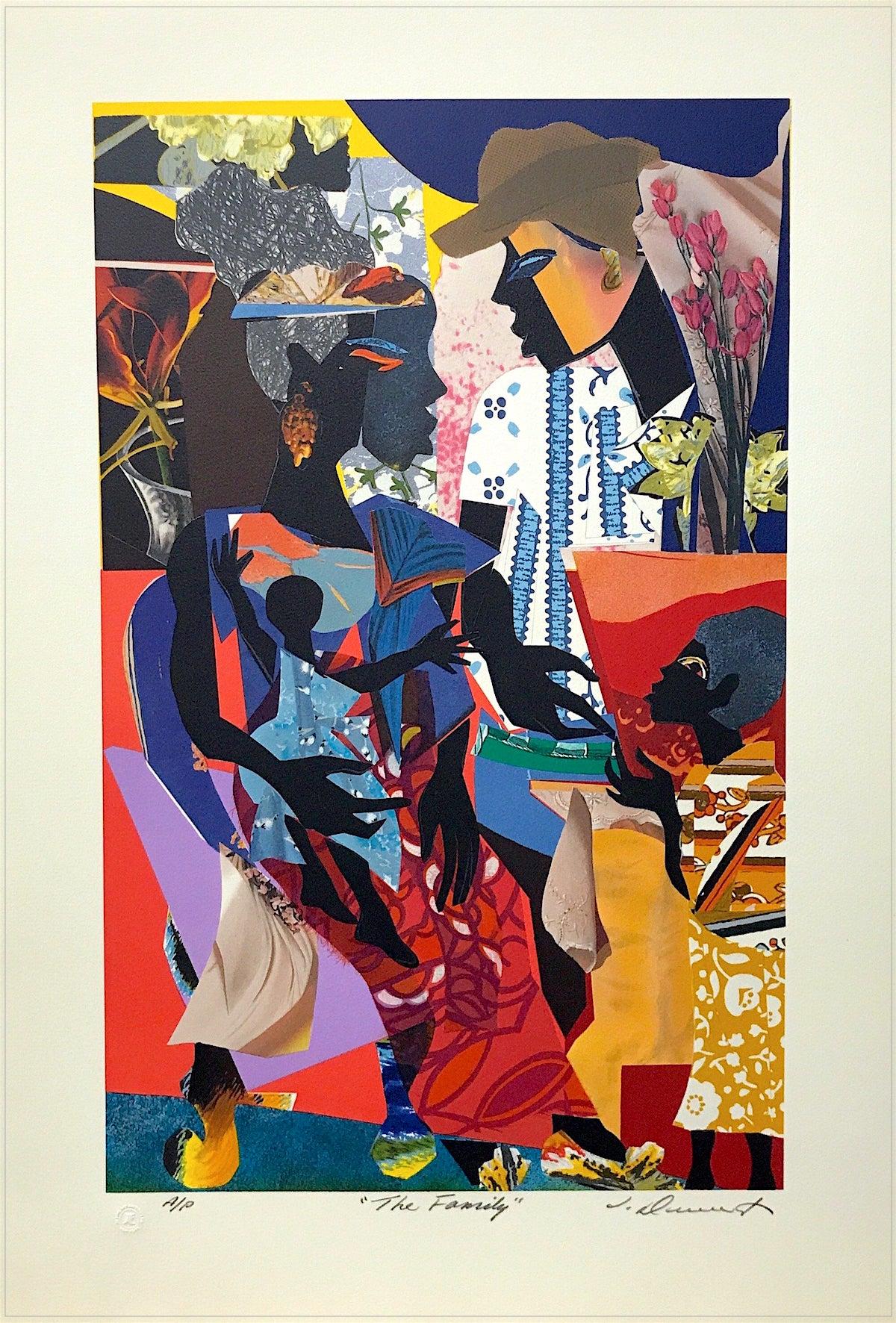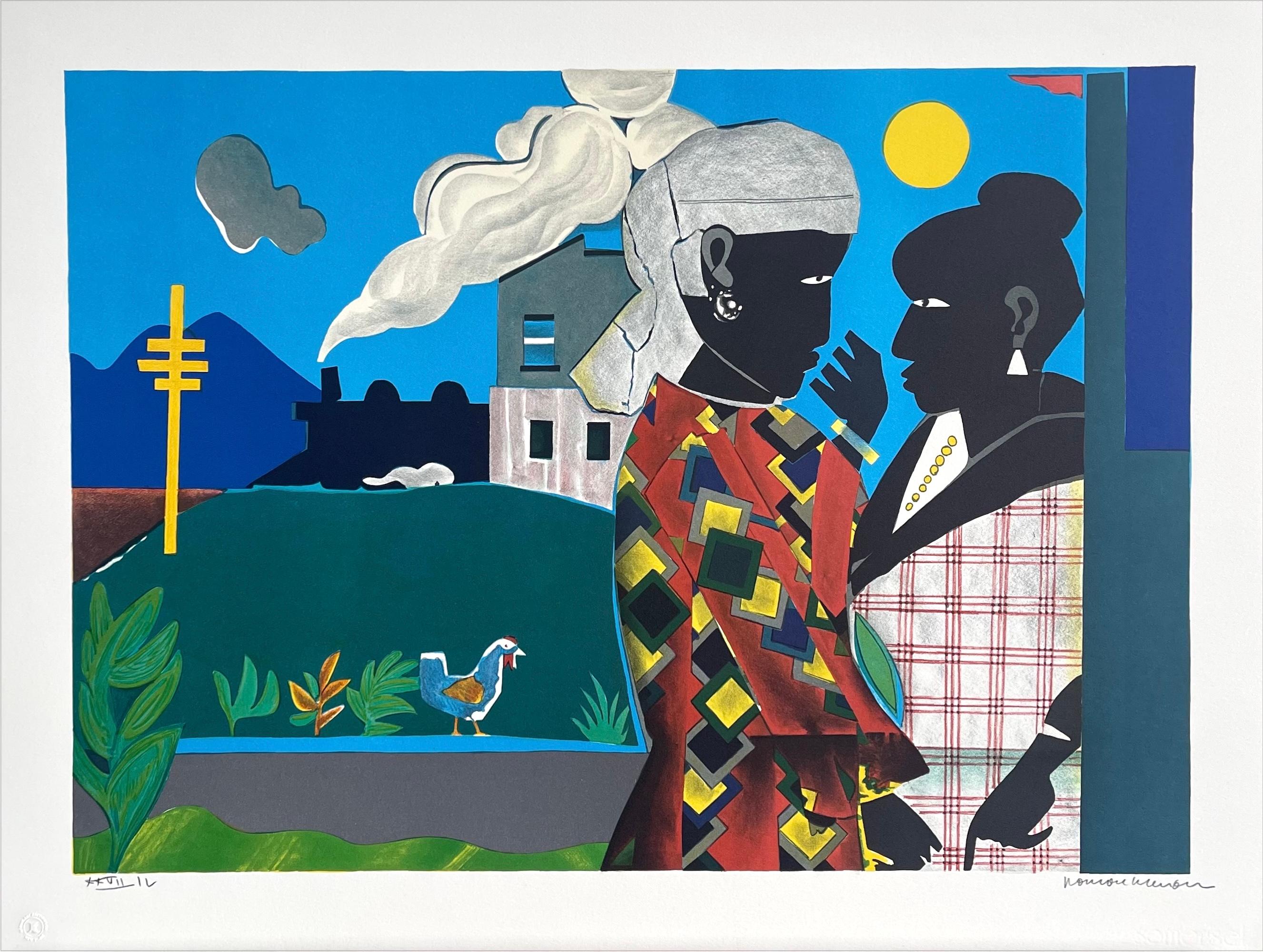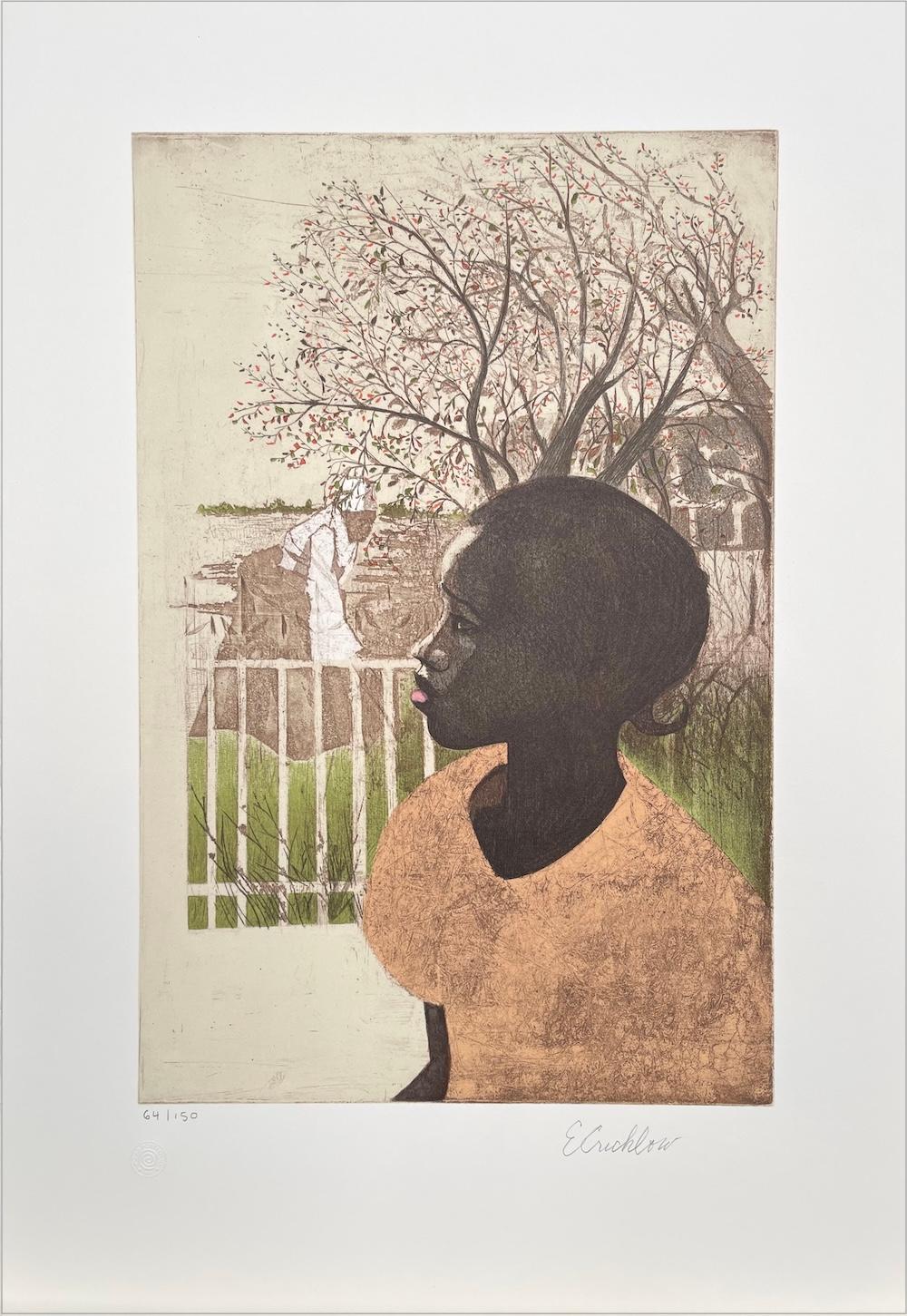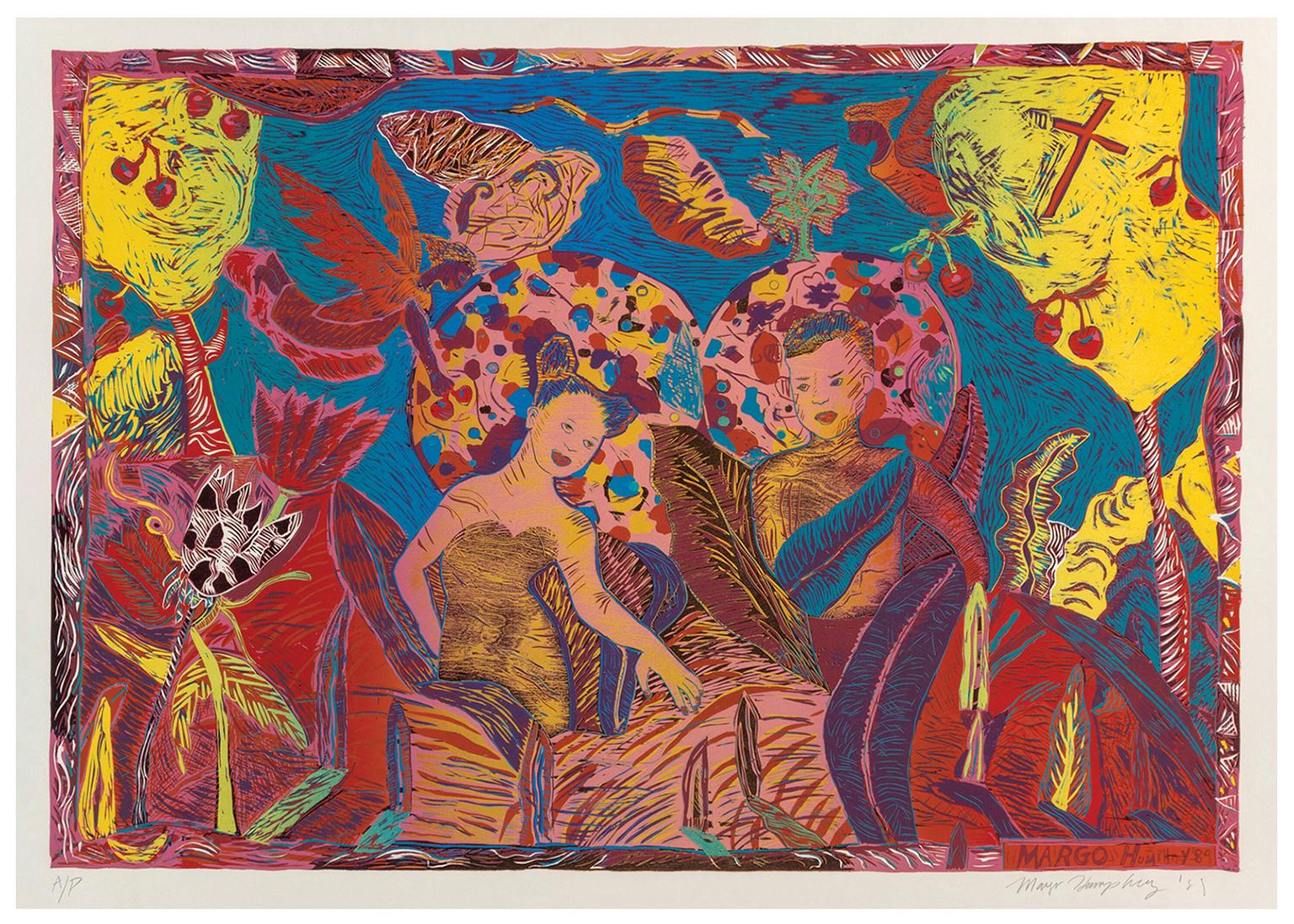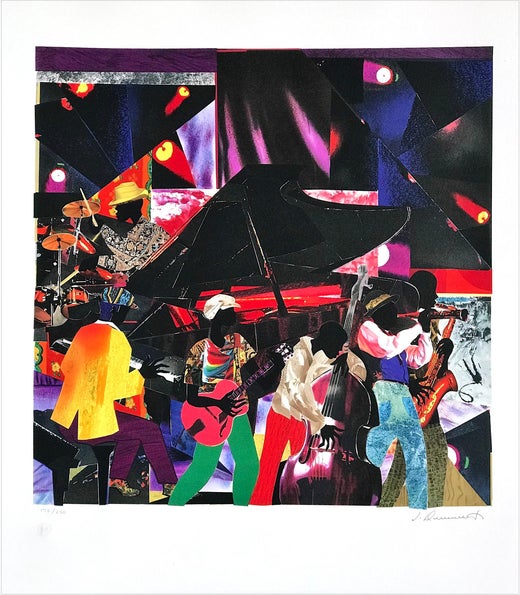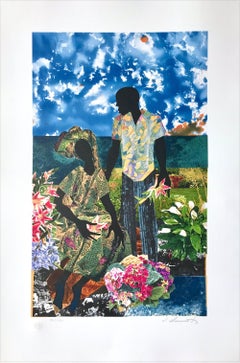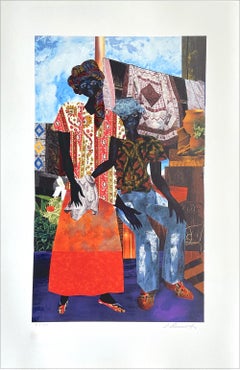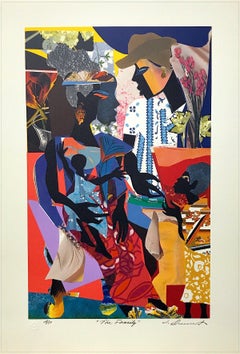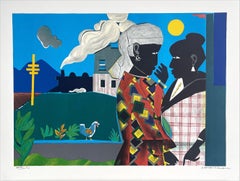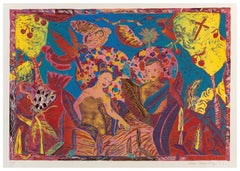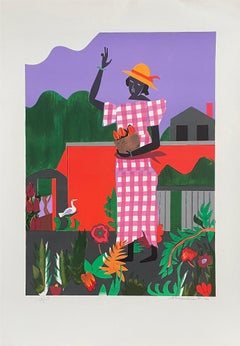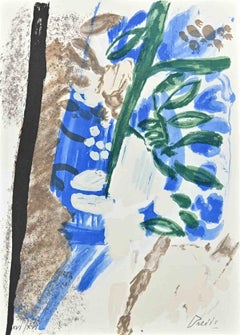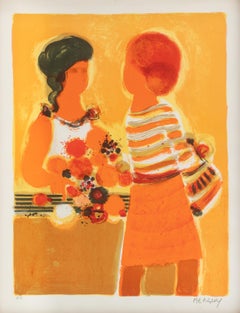James DenmarkGARDEN ROMANCE Signed Lithograph, Black Couple, Collage Portrait Lovers, Flowers1996
1996
About the Item
- Creator:James Denmark (1938, American)
- Creation Year:1996
- Dimensions:Height: 32 in (81.28 cm)Width: 21.25 in (53.98 cm)
- Medium:
- Movement & Style:
- Period:
- Condition:Excellent condition, archival framing, vivid colors, hand signed in pencil inscribed 1 / 15 H.C. by James Denmark, publisher's chop embossed lower left corner, Print Documentation/Certificate of Authenticity will be provided.
- Gallery Location:Union City, NJ
- Reference Number:1stDibs: LU832315523012
James Denmark
James Denmark was born in Winter Haven, Florida, in 1936 and was raised in an artistic family. His grandmother, a wire sculptor and quilt artist, exposed him to color and form at an early age. He was also influenced by his grandfather, a bricklayer noted for his unique custom design molds. Denmark has a natural feeling for the improvisational medium of collage, developing his unique signature style. Utilizing brightly hand-colored papers, fabric and textures, Denmark creates compositions that reflect African American heritage and culture. Denmark has had over 60 one-man exhibitions and has participated in numerous group shows. Works of art by James Denmark are a part of well recognized private and corporate collections in the USA as well as in Mexico, South Africa, Europe, Japan and Africa, including New York’s Metropolitan Museum of Art. Denmark has received numerous awards and recognition, including the 39th Annual Printing Industry Award given by the Schomburg Center for Research in Black Culture and the Living Legends Award presented by the National Urban League.
- ShippingRetrieving quote...Shipping from: Union City, NJ
- Return Policy
More From This Seller
View All1990s Contemporary Portrait Prints
Lithograph
1990s Contemporary Figurative Prints
Lithograph
1980s Contemporary Figurative Prints
Lithograph
1970s Contemporary Figurative Prints
Lithograph
Early 2000s Contemporary Portrait Prints
Lithograph
1990s Contemporary Portrait Prints
Lithograph
You May Also Like
1980s Expressionist Figurative Prints
Woodcut
1970s Abstract Expressionist Prints and Multiples
Lithograph
1970s Contemporary Figurative Prints
Lithograph
1970s Surrealist Figurative Prints
Lithograph
21st Century and Contemporary Contemporary Mixed Media
Ink, Mixed Media, Acrylic, Ballpoint Pen
1970s Prints and Multiples
Lithograph
